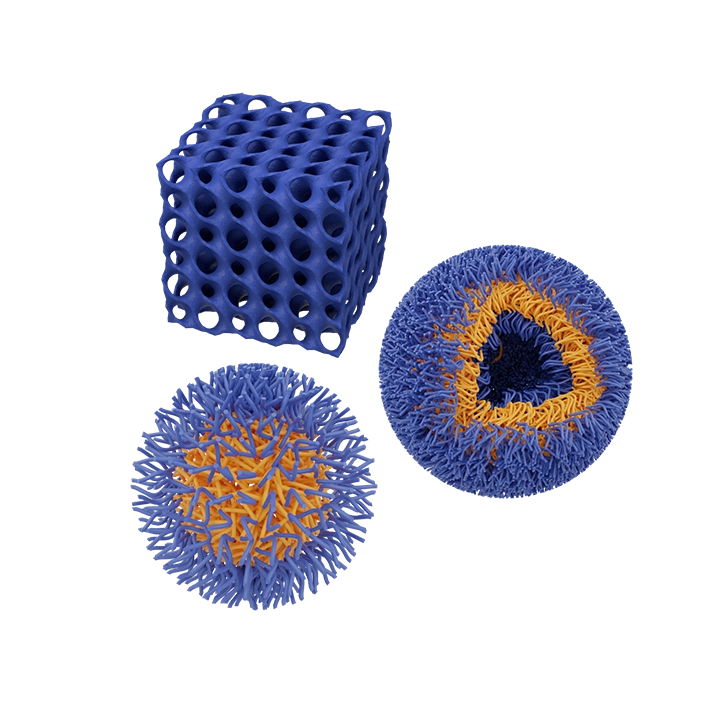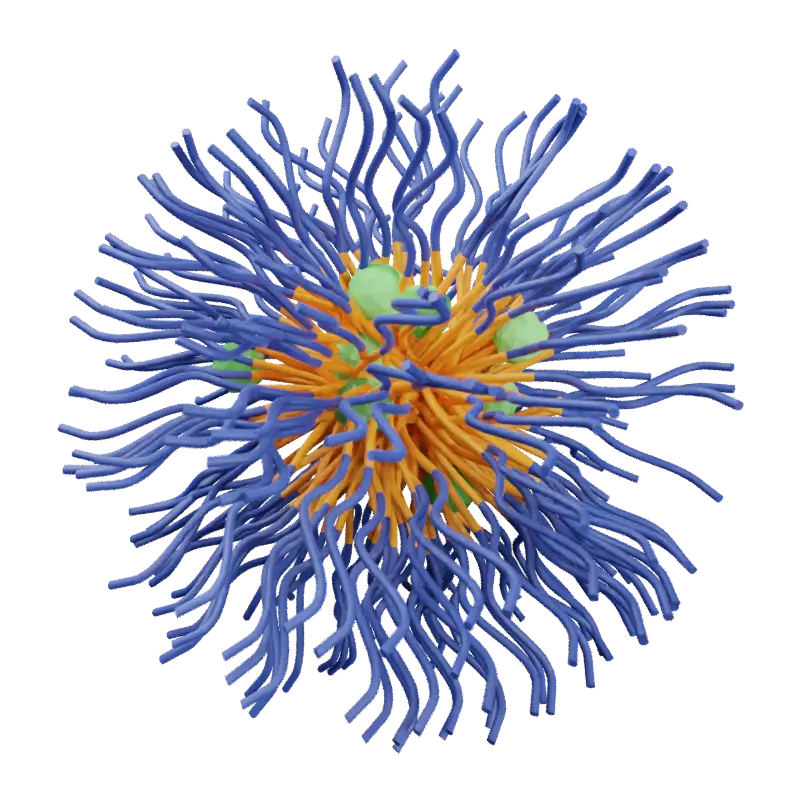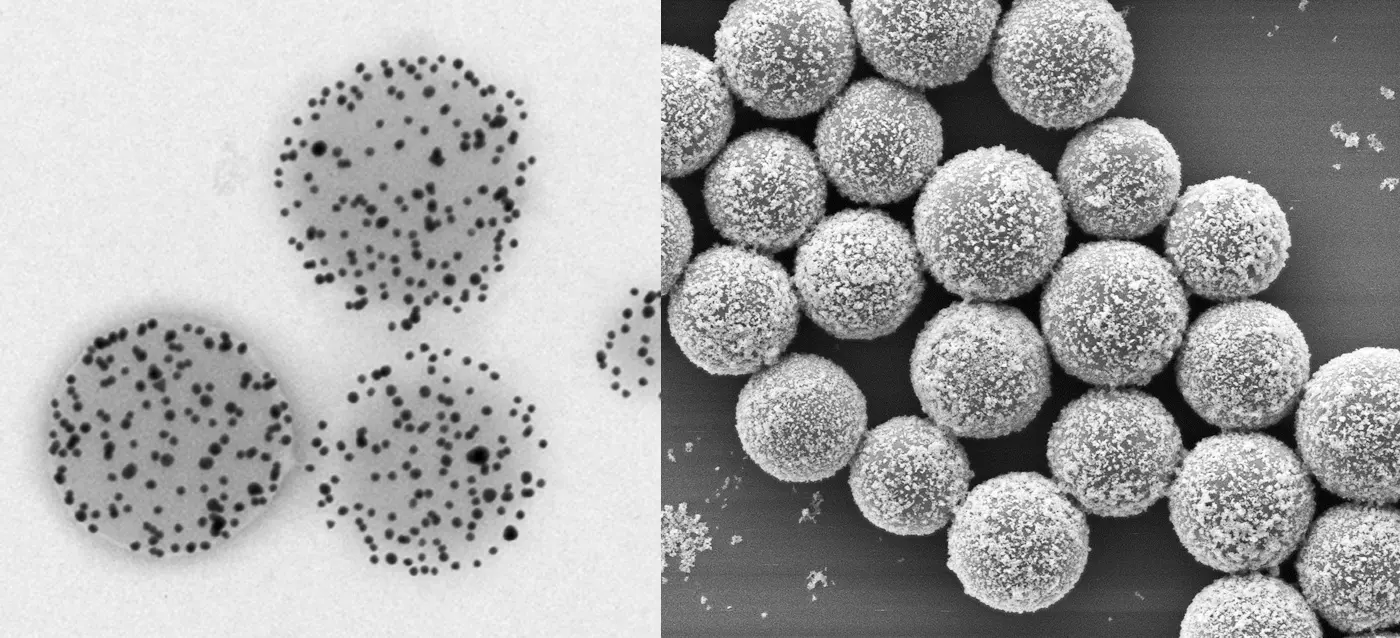
Nanostructured & hybrid soft matter
Our team has an expertise in the formation and characterisation of original colloidal structures.
The association of different building blocks such as amphiphilic compounds, block copolymers or liquid crystals allows us to obtain structures such as hydrogels (obtained by 3D printing or co-precipitation methods), cubosomes or polymersomes.
Supramolecular gel spaghetti
© Faniry Andriamiseza & Clément Roux
3D printing of a supramolecular gel
© Faniry Andriamiseza

Original organic/inorganic hybrid systems are designed and studied. As examples, the association of double hydrophilic block polymers with metal ions of different natures (Gd3+, Eu3+, Cu2+, Fe3+, Ga3+, etc.) leads to the formation of micelles of hybrid polyionic complexes of well-controlled size, making them suitable for applications in imaging or as nanoreactors.
We study the crucial role of soft matter in controlling the formation and stabilisation of inorganic nanoparticles such as gold particles or up-converting particles. This understanding also facilitates the formation of super colloids by a judicious choice of their composition.

The characterisation of these structures is based on a cross analysis thanks to complementary techniques, such as radiation scattering (light or X-rays, etc.) and electron microscopy. The understanding of the formation phenomena is an essential step of our work and is based in particular on the use of kinetic models and/or multivariate analyses.




